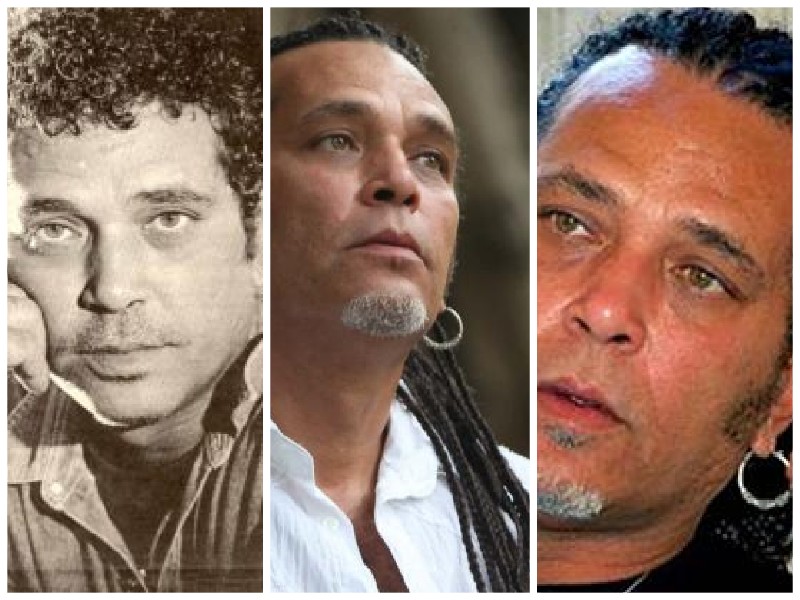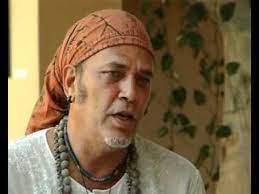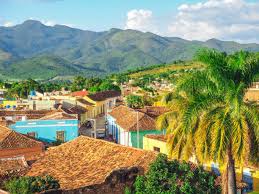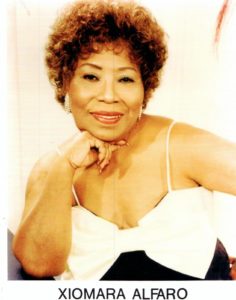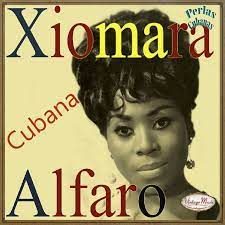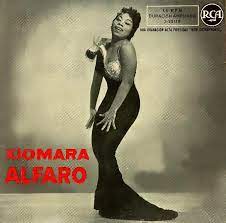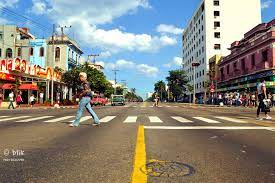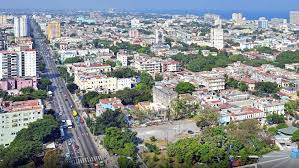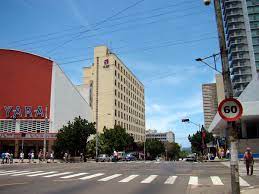ACTOR LUIS ALBERTO GARCÍA ROMPE CON EL PANTANO GUBERNAMENTAL: “NUESTRO CINE SERÁ LIBRE O NO SERÁ”. VIDEOS
‘Nuestro cine será libre o no será’: Luis Alberto García dedica un premio a la Asamblea de Cineastas Cubanos. En el Festival Internacional de Cine de Gibara, el popular actor recibió el premio ‘Lucía de Honor’. En su discurso de agradecimiento mencionó también a Guillermo Cabrera Infante.
EL ACTOR Luis Alberto García dedicó el premio Lucía de Honor, que recibió en el Festival Internacional de Cine de Gibara, a la Asamblea de Cineastas Cubanos y aseguró: “nuestro cine será libre o no será”. En sus palabras, recogidas en un video que compartió en las redes Yamila Marrero, García mencionó además al escritor Guillermo Cabrera Infante, censurado por el régimen.
RESUMIENTO SUS PALABRAS..
“En el orden personal, es un orgullo recibir este premio en Gibara, que es la tierra de Guillermo Cabrera Infante, es la tierra de Luis Catalá, a quien acabo de interpretar en una película hace pocos meses. Y también es la tierra de mi hermano Armando Capó”, inició su discurso García, quien también agradeció al fallecido cineasta Humberto Solás, fundador del festival.
VIDEOS- LUIS ALBERTO GARCÍA ACTUA EN “LA CAMPAÑA”…
“Este Festival, que se llamó Festival de Cine Pobre y ahora Internacional de Gibara, es el lugar que él escogió y que, por suerte, mantienen vivos ustedes. Porque los sueños se mantienen vivos”, dijo García.
“Qué maravilla es ser joven. Solás tenía 27 años, solo 27 años cuando hizo es maravilla de película que es Lucía, que es como se llama este premio, estrenada en octubre del 68, cinco meses después de los sucesos de mayo del 68 en París”, agregó.
García mencionó también a la Asamblea de Cineastas Cubanos (ACC). El impulso actual que ha cobrado la ACC, que recientemente se reunió con representantes del Gobierno cubano, está ligado a la reacción de parte del gremio ante la censura que sufrió el documental La Habana de Fito, dirigido por Juan Pin Vilar, y la posterior emisión de una versión no definitiva de esta obra en la televisión estatal, sin autorización de su director.
“Los jóvenes tienen una capacidad inmensa para soñar, y para creer en las utopías, y para llevarlas a término. Es por eso que hoy tengo aquí a dos de mis hijas, tengo cuatro. Yo siempre he querido que mis hijas aprendan que hay que aprender a pelear por los sueños, que cuando uno cree en algo hay que lucharlo”, sostuvo el actor frente al público que asistió al teatro donde tuvo lugar la premiación del Festival.
“Por eso hoy quiero dedicarle este premio a un grupo de jóvenes, muchachas y muchachos que me han devuelto la fe en estos días, y que me están enseñando que vale la pena luchar por las ideas que uno sostiene, por las ideas en las que uno cree. Esto lo comparto con la Asamblea de Cineastas de Cuba”, expresó el actor, que arrancó el aplausos de los presentes.
“No importa que de momento no nos entiendan, no importa que de momento existan suspicacias que nos invisibilicen. Yo quiero compartir mi premio con todas esas muchachas y esos muchachos. Nuestro cine será libre o no será”, concluyó y se llevó una ovación cerrada.
LA VIDA ARTISTICA DE LUIS ALBERTO GARCIA
Luis Alberto García. Popular actor cubano con una de las carreras actorales más sólidas de Cuba en todos los tiempos. Desde su aparición en las pantallas y teatros, se ha convertido en uno de los más importantes y populares intérpretes escénicos. Graduado en 1984, del Instituto Superior de Arte (ISA), en la especialidad de Actuación.
Ha incursionado en todos los medios, y ha demostrado que puede dominar un amplio registro de estilos de actuación. Sus personajes van desde policías encubiertos hasta motoristas frustrados y ha navegado tanto por la interpretación lírica como por la comedia.
Sobre el reconocimiento que recibió Luis Alberto García, el crítico de cine Gustavo Arcos expresó: “Lo vimos aparecer casi por vez primera como el cadete Antonio combatiendo en África para la popular serie Algo más que soñar. Recién se había graduado del ISA y su carrera ha resultado tan extensa y frenética, que ya tiene más películas que Adolfo Llauradó y Jorge Perugorría juntos, y eso es ya mucho decir”.
Recordó que también fue “Ernesto, el joven que al borde de la muerte salva a su amada” en Clandestinos. Tony, “el chofer de un taxi que recorre Cuba en Guantanamera”, “Mongo, el jonronero que ayuda a Clarita con su polímero en Plaff” y “Elpidio, el buscavidas de La vida es silbar, que lleno de incertidumbres le reclama espacio a su madre Cuba, porque nadie es perfecto”.
“Para presumir y amar tuvo doble identidad en Adorables mentiras y luego fue un pervertido sadomasoquista chino en Molinas test. Ha sido Nicanor en todas partes, tiempos y lugares. Hace muy poco fue el déspota y asesino dictador Trujillo en una serie para Disney+, y en Netflix lo vimos aparecer como El flaco, el optimista y mutilado héroe de guerra, amigo de Mario Conde en Las cuatro estaciones”, concluyó Arcos su repaso por la carrera del popular actor cubano.
PREMIOS Y RECONOCIMIENTOS
Premio a la mejor actuación masculina en cine. Concurso de la Unión de Escritores y Artistas de Cuba. La Habana, 1992.
Premio a la mejor actuación masculina en televisión. Concurso de la Unión de Escritores y Artistas de Cuba. La Habana, 1984.
Premios Catalina de Oro a la mejor actuación masculina. XXVIII Festival Internacional de Cartagena de Indias, Colombia, 1988.
Premio a la mejor actuación masculina en cine. 1988
Premio a la mejor actuación masculina de reparto en televisión. Concurso de la Unión de Escritores y Artistas de Cuba. La Habana 1995.
Premio a la mejor actuación masculina. Festival de Cine de Amiens. Francia. 1998.
Premio a la mejor actuación masculina de reparto en cine. Concurso de la Unión de Escritores y Artistas de Cuba. La Habana, 1995.
Premio a la mejor actuación masculina. XI Festival Internacional de Cine de Viña del Mar. Chile,
Premio a la mejor actuación masculina en televisión. Concurso de la Unión de Escritores y Artistas de Cuba. La Habana, 1986.
Premio a la mejor actuación masculina de reparto. Concurso de la Unión de Escritores y Artistas de Cuba. La Habana, 1999.
Premio Catalina de Oro a la mejor actuación masculina. XXXVIII Festival Internacional de Cartagena de Indias. Colombia, 1998.
ACTOR LUIS ALBERTO GARCIA BREAKS WITH THE GOVERNMENT SWAMP: “OUR CINEMA WILL BE FREE OR IT WILL NOT BE”. PHOTOS
‘Our cinema will be free or it will not be’: Luis Alberto García dedicates an award to the Assembly of Cuban Filmmakers. At the Gibara International Film Festival, the popular actor received the ‘Lucía de Honor’ award. In his thank you speech he also mentioned Guillermo Cabrera Infante.
THE ACTOR Luis Alberto García dedicated the Lucía de Honor award, which he received at the Gibara International Film Festival, to the Assembly of Cuban Filmmakers and assured: “our cinema will be free or it will not be.” In his words, collected in a video that Yamila Marrero shared on the networks, García also mentioned the writer Guillermo Cabrera Infante, censored by the regime.
SUMMARY YOUR WORDS..
“On a personal level, I am proud to receive this award in Gibara, which is the land of Guillermo Cabrera Infante, it is the land of Luis Catalá, whom I just played in a film a few months ago. And it is also the land of my brother Armando Capó”, began his speech García, who also thanked the late filmmaker Humberto Solás, founder of the festival.
“This Festival, which was called the Festival de Cine Pobre and now Gibara International, is the place that he chose and that, luckily, you keep alive. Because dreams stay alive,” said García.
“How wonderful it is to be young. Solás was 27 years old, only 27 years old when he made the wonderful film that Lucía is, which is what this award is called, released in October 1968, five months after the events of May 1968 in Paris,” he added.
García also mentioned the Assembly of Cuban Filmmakers (ACC). The current momentum that the ACC has gained, which recently met with representatives of the Cuban government, is linked to the reaction of the union to the censorship suffered by the documentary La Habana de Fito, directed by Juan Pin Vilar, and the subsequent broadcast of a non-definitive version of this work on state television, without the authorization of its director.
“Young people have an immense capacity to dream, and to believe in utopias, and to carry them out. That is why I have two of my daughters here today, I have four. I have always wanted my daughters to learn that they have to learn to fight for your dreams, that when you believe in something you have to fight for it,” the actor said in front of the audience that attended the theater where the Festival awards ceremony took place.
“That is why today I want to dedicate this award to a group of young people, girls and boys who have restored my faith in these days, and who are teaching me that it is worth fighting for the ideas that one supports, for the ideas in which one believes. I share this with the Assembly of Cuban Filmmakers,” said the actor, who drew applause from those present.
“It doesn’t matter that at the moment they don’t understand us, it doesn’t matter that at the moment there are suspicions that make us invisible. I want to share my award with all those girls and those boys. Our cinema will be free or it will not be,” he concluded and received a standing ovation.
THE ARTISTIC LIFE OF LUIS ALBERTO GARCIA
Luis Alberto Garcia. Popular Cuban actor with one of the most solid acting careers in Cuba of all time. Since his appearance on the screens and theaters, he has become one of the most important and popular stage performers. He graduated in 1984 from the Higher Institute of Art (ISA), specializing in Acting.
He has dabbled in all mediums, and has shown that he can master a wide range of acting styles. His characters range from undercover cops to frustrated bikers and he has navigated both lyrical performance and comedy.
Regarding the recognition that Luis Alberto García received, the film critic Gustavo Arcos expressed: “We saw him appear almost for the first time as the cadet Antonio fighting in Africa for the popular series Something more than dreaming. He had just graduated from ISA and his career It has been so extensive and frantic that it already has more films than Adolfo Llauradó and Jorge Perugorría combined, and that is already saying a lot”.
He recalled that he was also “Ernesto, the young man who, on the brink of death, saves his beloved” in Clandestinos. Tony, “the driver of a taxi that runs through Cuba in Guantanamera”, “Mongo, the home run hitter who helps Clarita with her polymer in Plaff” and “Elpidio, the go-getter from La vida es silbar, who full of uncertainties demands space from his mother Cuba, because nobody is perfect”.
“To show off and love he had a double identity in Adorables Lies and then he was a Chinese sadomasochistic pervert in Molinas test. He has been Nicanor everywhere, times and places. Very recently he was the despot and murderer dictator Trujillo in a series for Disney +, and On Netflix we saw him appear as El Flaco, the optimistic and mutilated war hero, Mario Conde’s friend in The Four Seasons,” Arcos concluded his review of the career of the popular Cuban actor.
AWARDS AND HONOURS
Award for the best male performance in cinema. Contest of the Union of Writers and Artists of Cuba. Havana, 1992.
Award for the best male performance on television. Contest of the Union of Writers and Artists of Cuba. Havana, 1984.
Catalina de Oro Awards for best male performance. XXVIII International Festival of Cartagena de Indias, Colombia, 1988.
Award for the best male performance in cinema. 1988
Award for Best Supporting Male Performance on Television. Contest of the Union of Writers and Artists of Cuba. Havana 1995.
Award for the best male performance. Amiens Film Festival. France. 1998.
Award for Best Supporting Male Performance in Film. Contest of the Union of Writers and Artists of Cuba. Havana, 1995.
Award for the best male performance. XI International Film Festival of Viña del Mar. Chile,
Award for the best male performance on television. Contest of the Union of Writers and Artists of Cuba. Havana, 1986.
Award for Best Supporting Male Performance. Contest of the Union of Writers and Artists of Cuba. Havana, 1999.
Catalina de Oro Award for best male performance. XXXVIII International Festival of Cartagena de Indias. Colombia, 1998.
Agencies/ Wiki/ DDC/ LuisAlbertoGarciaBio./ TMDB/ Extractos/ Excerpts/ Internet Photos/ YouTube/ Arnoldo Varona/ www.TheCubanHistory.com
THE CUBAN HISTORY, HOLLYWOOD.



